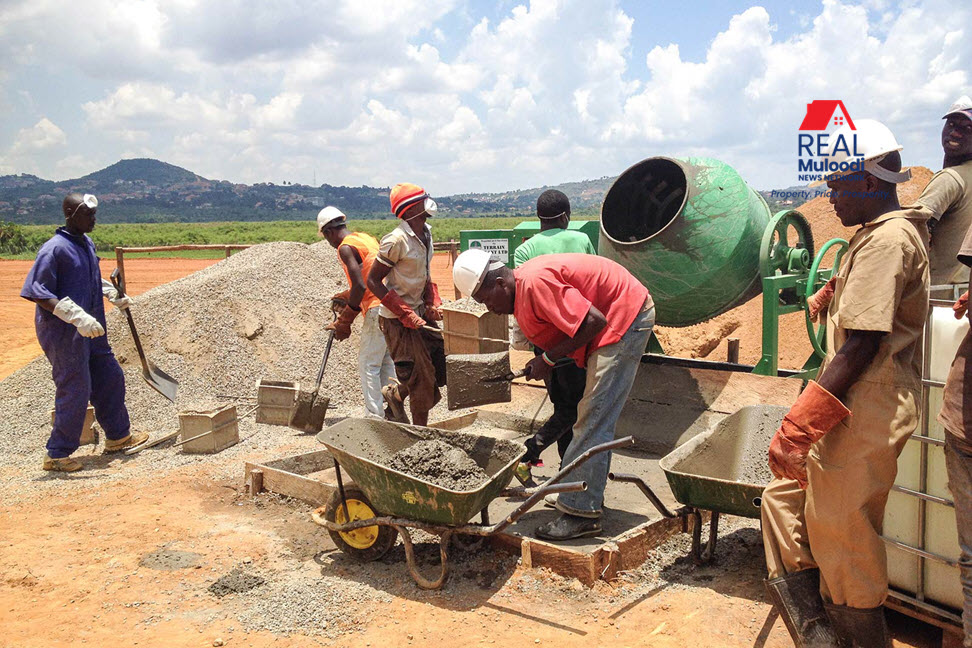UGANDA, Kampala | Real Muloodi News | The current surge in cement prices may tempt some builders to decrease the required amount of cement in their concrete mix for building. However, this could prove costly in the long run. Insufficient cement results in a lack of cohesion in the aggregate mix, leading to concrete that crumbles easily under pressure.
The collapse of the Speke Courts extension building in Jinja earlier this year is a clear illustration of the risks associated with using insufficient amounts of cement in construction. According to Herbert Zziwa, the Communications Manager of the National Building Review Board-NRBC, one of the reasons the building collapsed was low amounts of cement in the concrete mixture used for both the foundation and different beam levels. This weakened the building’s holding spaces and ultimately led to its collapse.
Concrete, which is a mixture of fine and coarse aggregate (like sand and stone) together with cement, is considered one of the most important materials for the strength and sustainability of a building in construction.
Rashid Senyonjo, a structural engineer with HIL Consult, stresses that the choice of concrete is crucial for the construction of any building.
However, not all concrete is created equal. Concrete is created to meet different grades, which include normal, standard and high-strength. These grades indicate how much pressure the concrete can withstand and what construction applications it can be used for. Senyonjo explains the several types of concrete used in construction, and their applications.
Normal Concrete
Normal strength concrete is made up of a combination of several fundamental ingredients — aggregate, cement, and sand — in a 1:2:4 ratio. Normal concrete, which is typically grade 20 millimeters, is commonly used in house foundations, ground slabs of a house, and on the ring beam. This type of concrete has a high compressive strength but is weak in tension, making it less durable in harsh weather conditions.
Heavy or High-Strength Concrete
Heavy or high-strength concrete is classified from 25-30 millimeters and above, and is used in column bases of houses of about three to four levels. This type of concrete is made by adding less water to the cement during mixing, and sometimes silica fume can be added to the mixture to prevent the formation of calcium hydroxide crystals in the cement, which lowers the strength of the cement bonding. High-strength concrete has no integration in it, making it easy to place and highly durable.
Reinforced Concrete
Reinforced concrete can be either normal or high concrete, enriched with steel. The steel reinforcement in forms of mesh, rods, and bars ensures maximum bonding and hardening between the concrete and the steel. This type of concrete is commonly used in the construction of floor and roof slabs, columns, and beams of both residential and commercial structures due to the heavy loads that need support from the strong steel bars. These reinforcements resist tensile forces to avoid cracking or breaking. Meanwhile, the concrete itself resists compressive forces to withstand heavy weight.
Pervious Concrete
Pervious concrete contains holes in the material, allowing water and air to pass through it. The sand content in the concrete mixture is low, making it porous and letting water pass through easily seeping into the ground. Pervious concrete is mainly used in the construction of pavements and requires low maintenance.
Light or Basic Concrete
Light or basic concrete is of low grade and is classified as class 10-15 millimeters. Lightweight concrete is graded in ratios of 1:4:8, which generally consists of cement and coarse aggregate only (sand). It is used on external walls, filling walls, fixing bricks, among others.
READ MORE LIKE THIS:
Cement Prices Rise as Factory Operations are Hindered by Severe Blackouts
Recycled Concrete Aggregate to Combat Uganda’s Cost of Cement Crisis
Cement is a Hazardous Construction Material; Health Risks and Precautions



